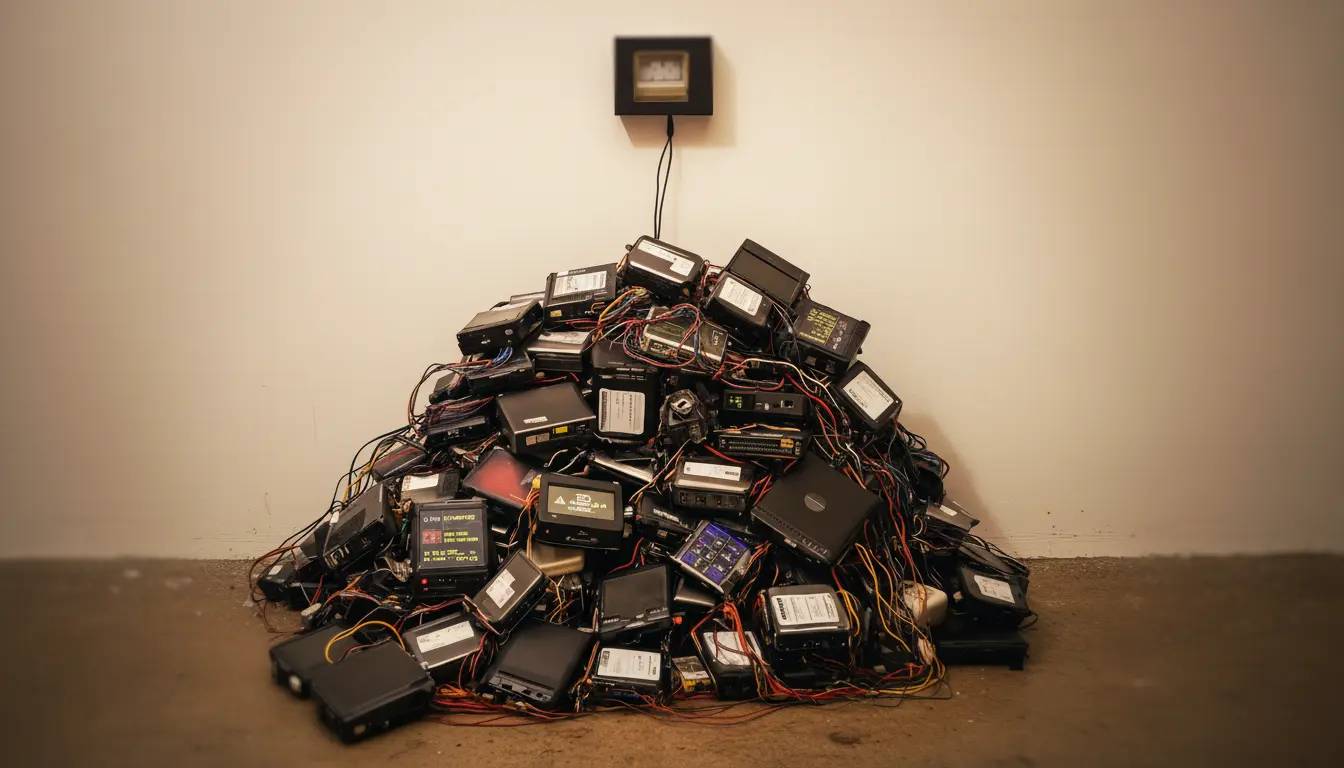Imagine a world where your next home energy solution isn’t delivered by a utilities company, but assembled from the forgotten batteries inside discarded laptops and powered by rays of sunshine dancing across your roof—sounds far-fetched? Not for one innovative tinkerer who’s been running his home off-grid for years with over 650 recycled laptop batteries, making « waste not, want not » a source of infinite energy and inspiration.
From E-Waste to Endless Energy
In the climate where innovation waltzes with sustainability, one passionate energy-autonomy enthusiast has turned tech trash into a surprisingly untapped resource. Since 2016, his home has thrived on a growing collection of more than 650 repurposed laptop batteries—proof that what we discard may actually be hiding enormous potential (move over, landfills!).
The spark behind this off-grid journey came at a time when both companies and everyday consumers were wrestling with the short lifespan and autonomy limits of modern gadgets. New battery technologies making headlines promise decades of power without a recharge, but our DIY hero chose another route—repurposing heaps of old laptop batteries, once bound for recycling, to meet his household’s energy needs and break up with the electric grid for good.
The Making of an Off-Grid Powerhouse
His quest for independence wasn’t just bold, it was meticulously engineered. Back in November 2016, he pulled together solar panels, an aging forklift battery, charging controllers, and an inverter. But the true heart of his system beats 50 meters from his house: a dedicated shed brimming with batteries, solar infrastructure, and the kind of experimental spirit that makes neighbors curious and electricians envious (or nervous).
Starting with an initial haul of 650 laptop batteries, he constructed battery packs of about 100Ah each, carefully linking them with trusty copper cables—because when you want lasting connections, copper is your best friend. Inside this outbuilding, the system combines those batteries with solar panels to churn out renewable, off-grid energy. Many would call it unconventional, but nearly a decade in, it’s run reliably, with zero fires or unnerving « battery balloon » incidents to date. Clearly, careful design can light up more than just a home; it can ease a lot of worries too.
Challenges, Solutions, and Solid Results
Let’s be honest: projects like these aren’t plug-and-play. This journey came with technical tumbles, including uneven discharge rates across batteries. Ever undaunted, he balanced the cells, sometimes adding extra ones where needed. Rather than simply stacking entire batteries together, he dismantled individual cells, arranging them in custom racks to boost efficiency and longevity—because sometimes, it pays to think inside (and outside) the box.
As the years rolled by, upgrades followed. Today, the system boasts 24 solar panels rated at 440W each—serious sun power! With these improvements, the off-grid system hasn’t missed a beat since its debut. Most astonishingly, not one cell has needed to be replaced; talk about a testament to foresight, durability, and a touch of mad-scientist magic.
For the skeptics (because there’s always someone at the forum with a raised eyebrow), a quick technical detour:
- Solar panels of 400–440Wp can now be found from as low as €50 in some places (excluding tax), at least if you know where to look—and can avoid enriching distributors. The era of expensive solar, it seems, is shaking.
- Lithium batteries, like any, will go up in smoke if overly discharged but, as asked rhetorically, why would anyone drive a Tesla if this risk made it a deal-breaker? Sorting and pairing by voltage, capacity, and resistance isn’t a task for the faint-hearted—some prior expertise is needed.
- There are now reliable aftermarket solutions; boating and camping enthusiasts can vouch for them. The setup just needs the right scaling for greater power.
- Admittedly, while the economic break-even can be questioned given low grid prices, the privilege of electricity without obligatory smart meters is a real bonus for some (and maybe even a little rebellious fun).
Lessons from a Shed Full of Energy
This project isn’t just about one inventor’s journey. It sheds bright light on the sometimes-overlooked promise of energy independence and inspires a whole new way to think about electronic waste. As environmental and economic factors nudge more folks toward alternative energy, this shed-based marvel could fuel a wave of similar innovations.
Ultimately, the story here is of human ingenuity and adaptability at a time when energy is a crucial concern. This self-powered home serves personal needs, yes, but also unlocks fresh perspectives for reusing existing technology sustainably. With the global energy transition in full swing, this effort is more than a clever hack—it’s a shining example for anyone dreaming of autonomy, even if it means sifting through e-waste instead of scrolling through sales at the electric company.
Final thought? Between the battle of nuclear lobbies and conspiracy theories, hoping for a better world isn’t forbidden—sometimes, it’s built one recycled battery at a time.

John is a curious mind who loves to write about diverse topics. Passionate about sharing his thoughts and perspectives, he enjoys sparking conversations and encouraging discovery. For him, every subject is an invitation to discuss and learn.






